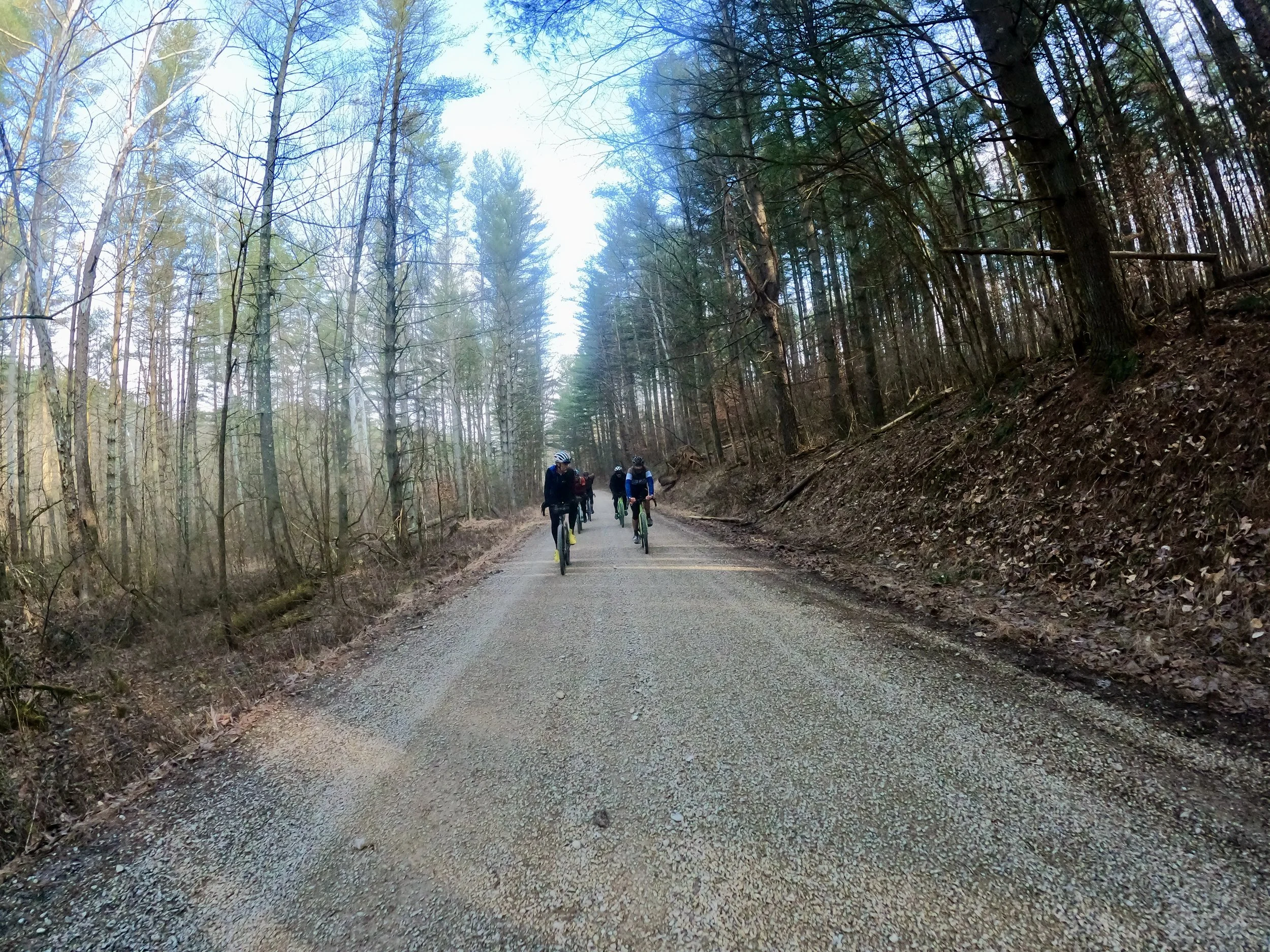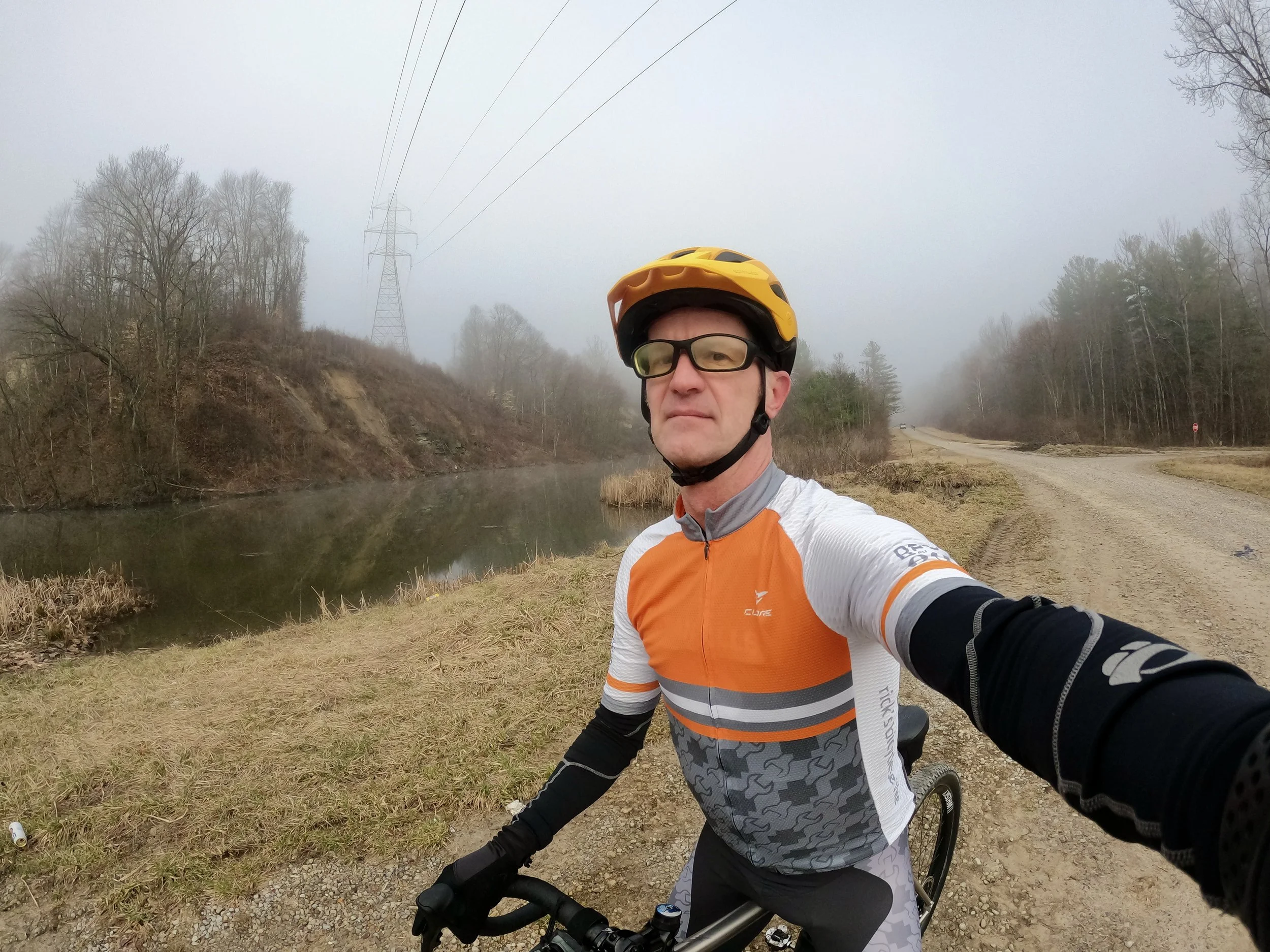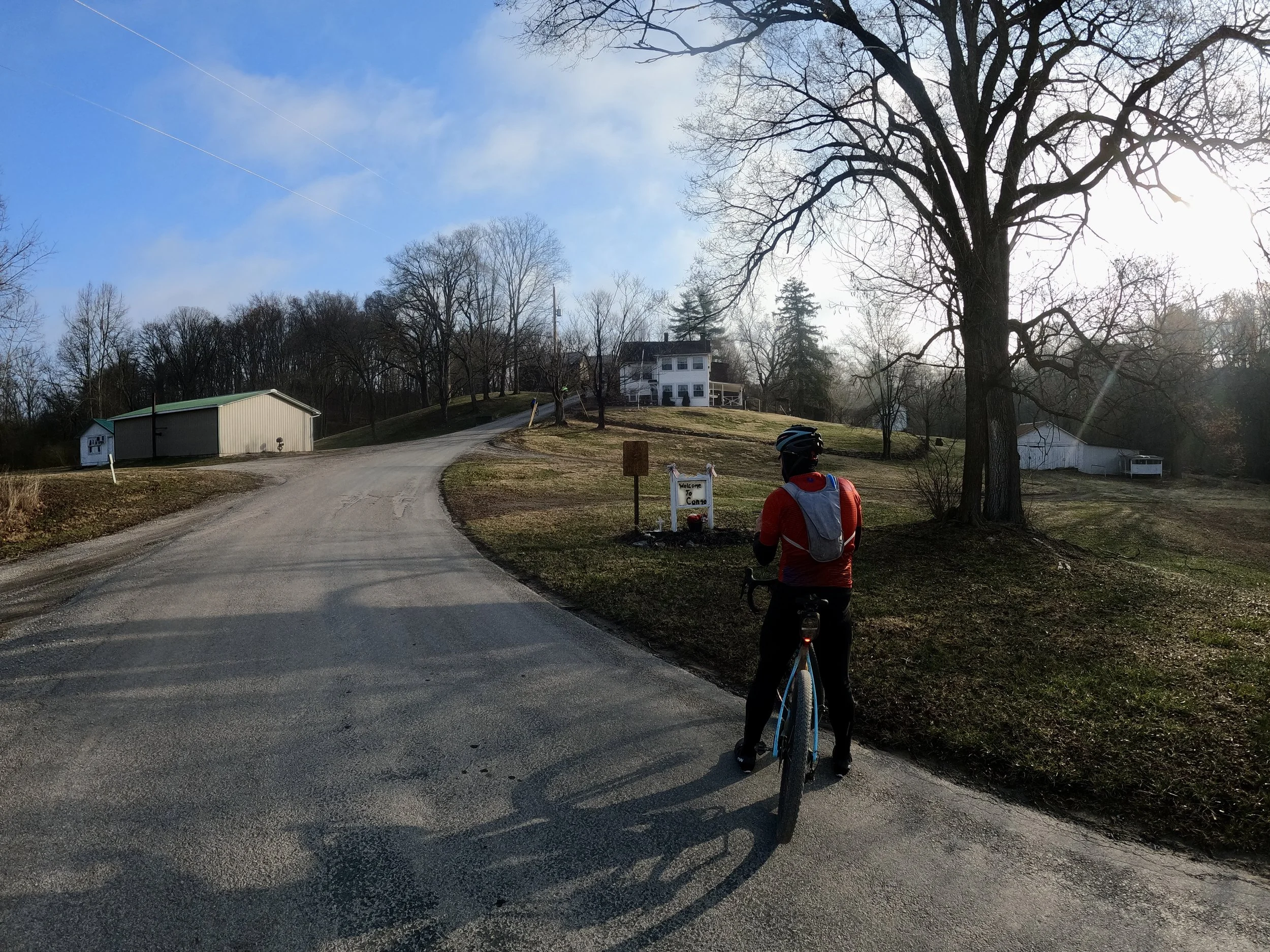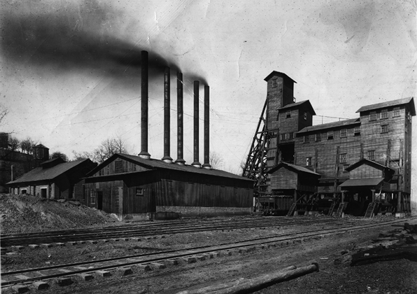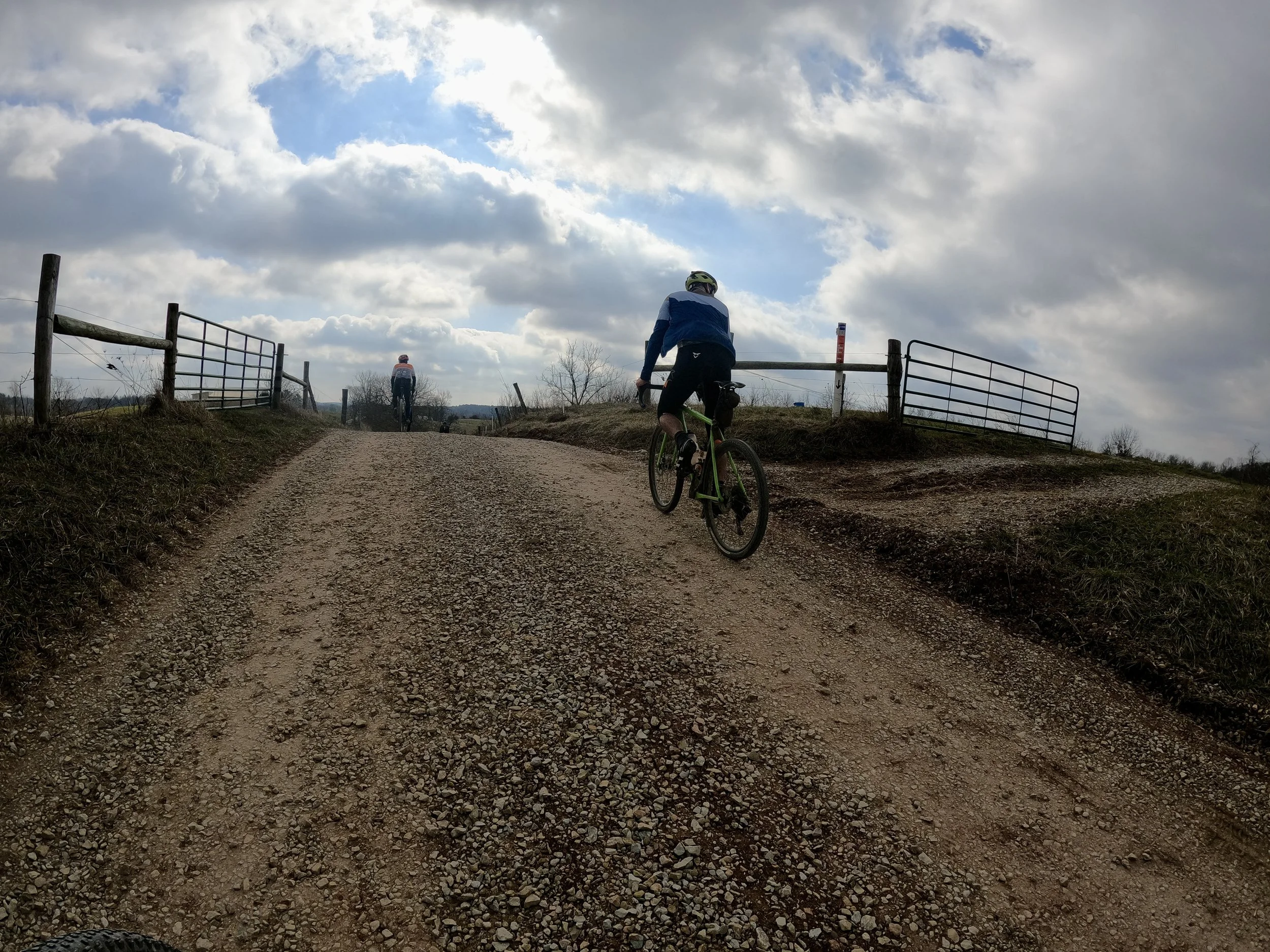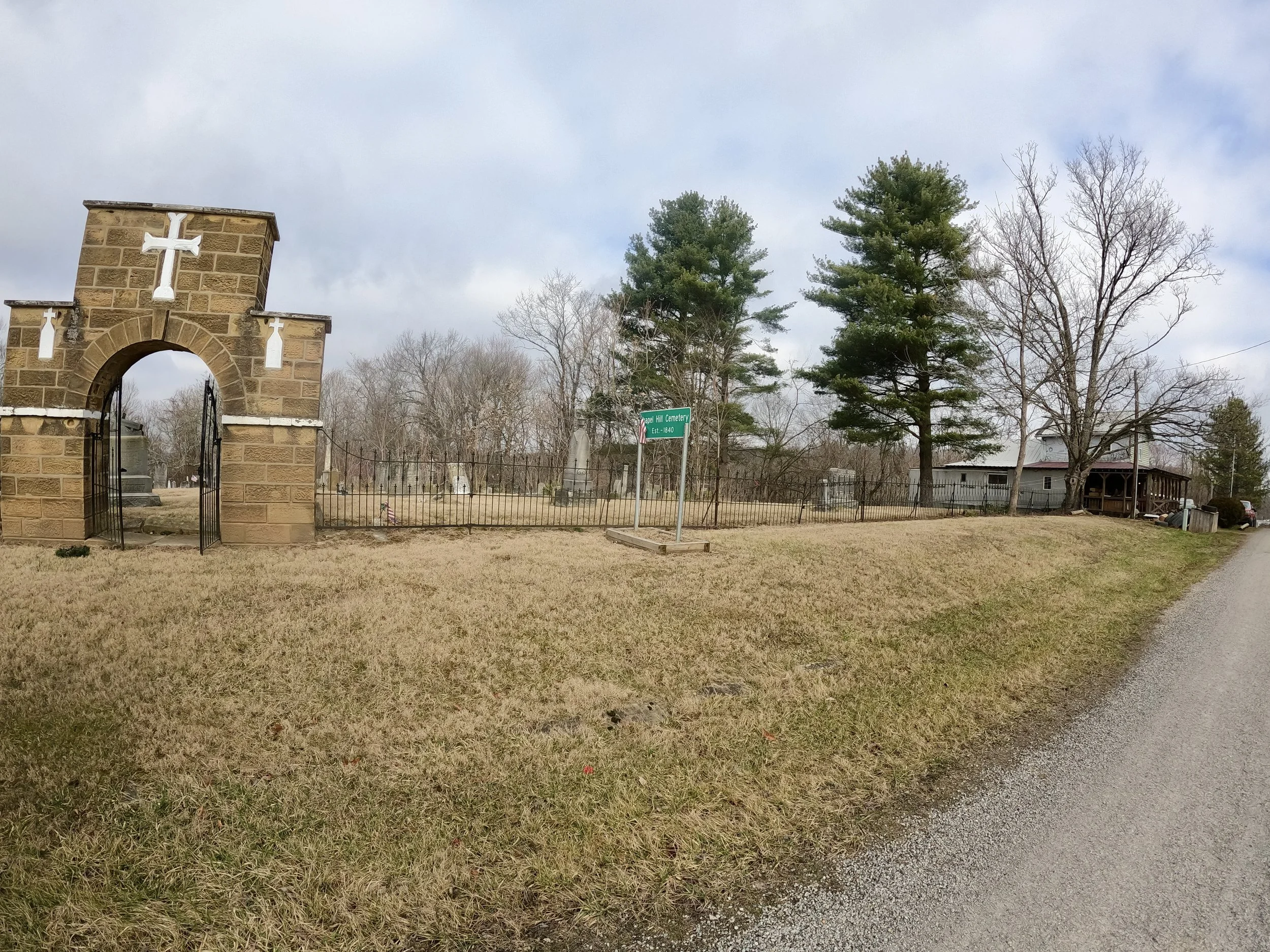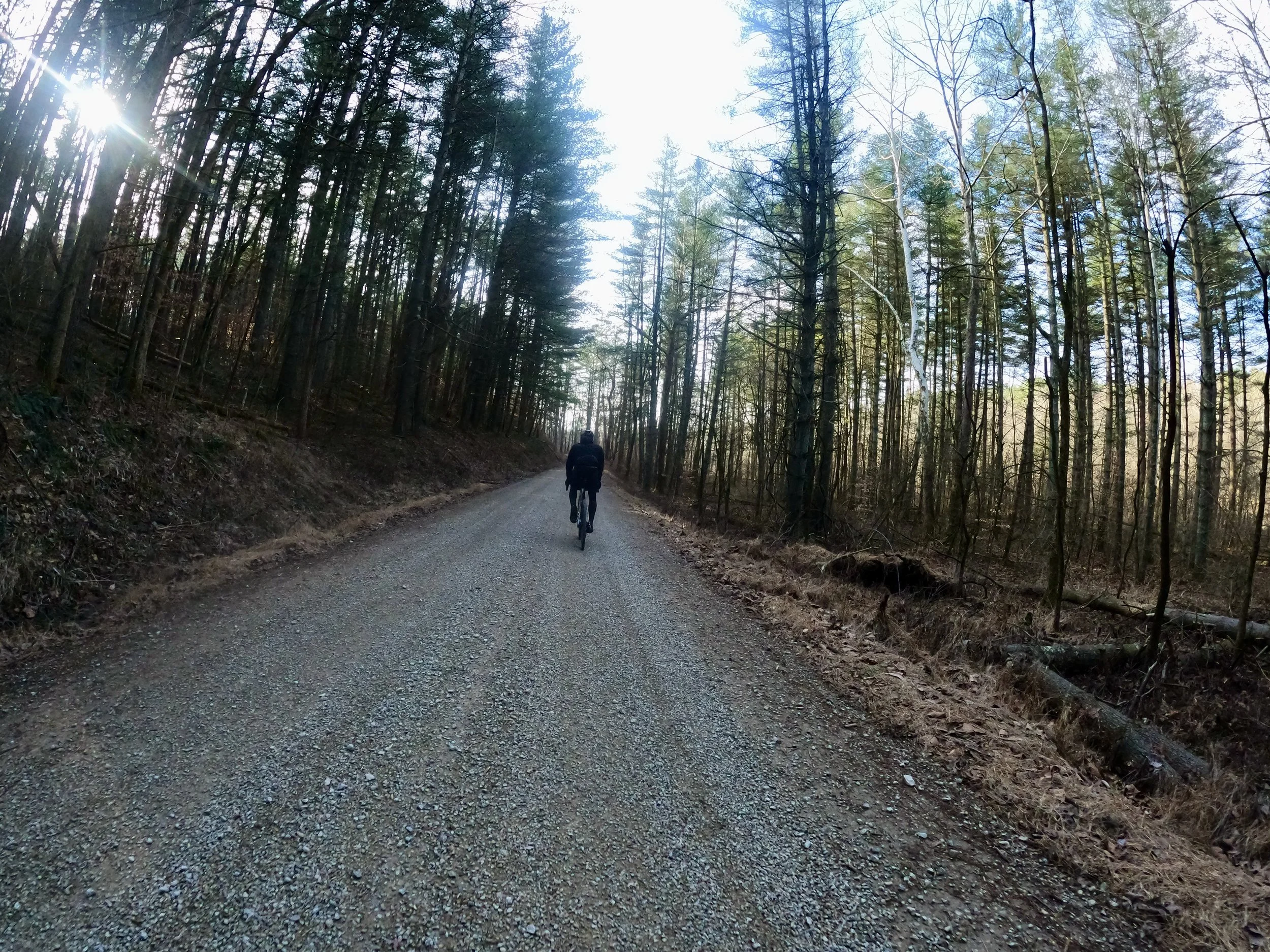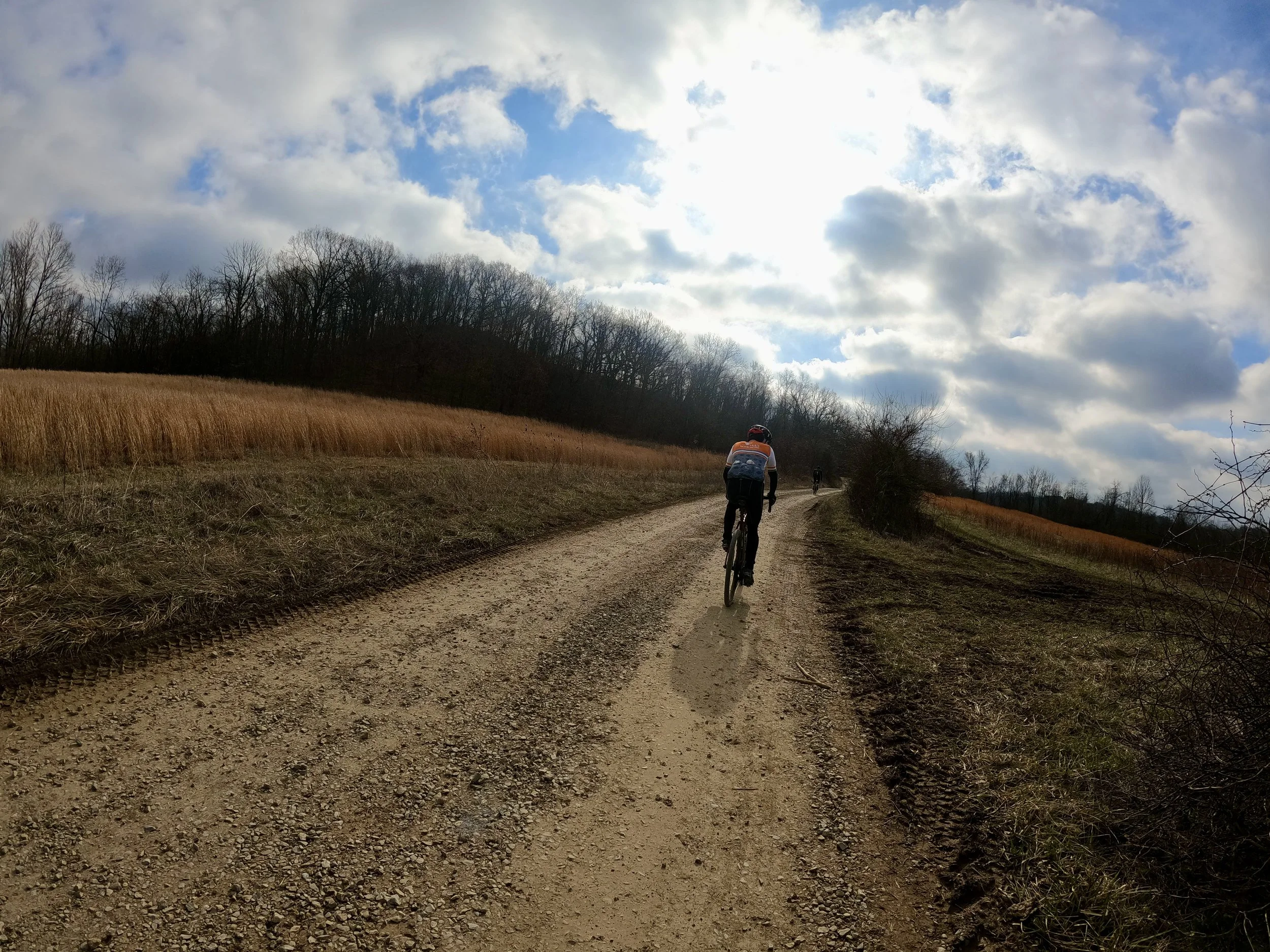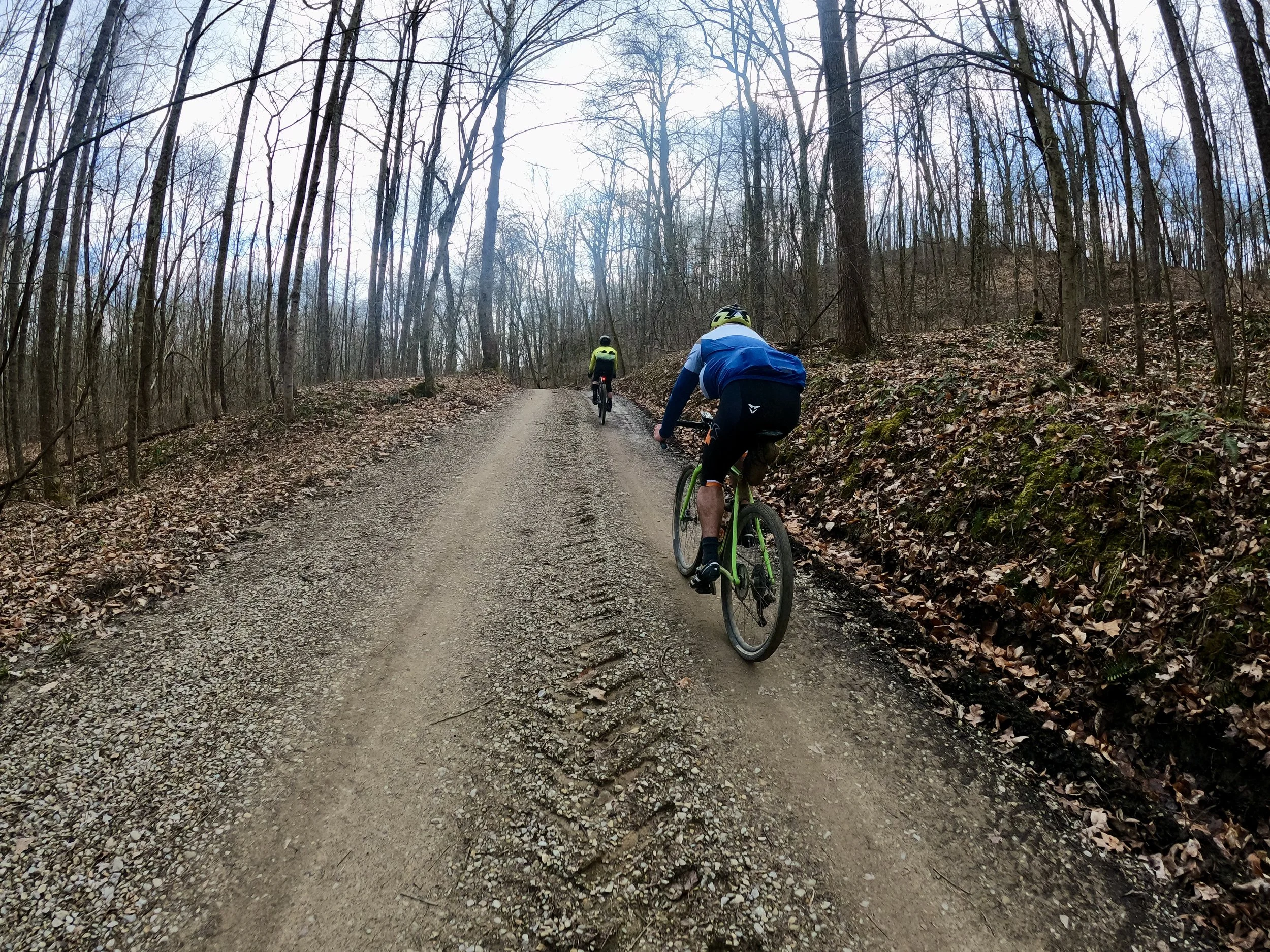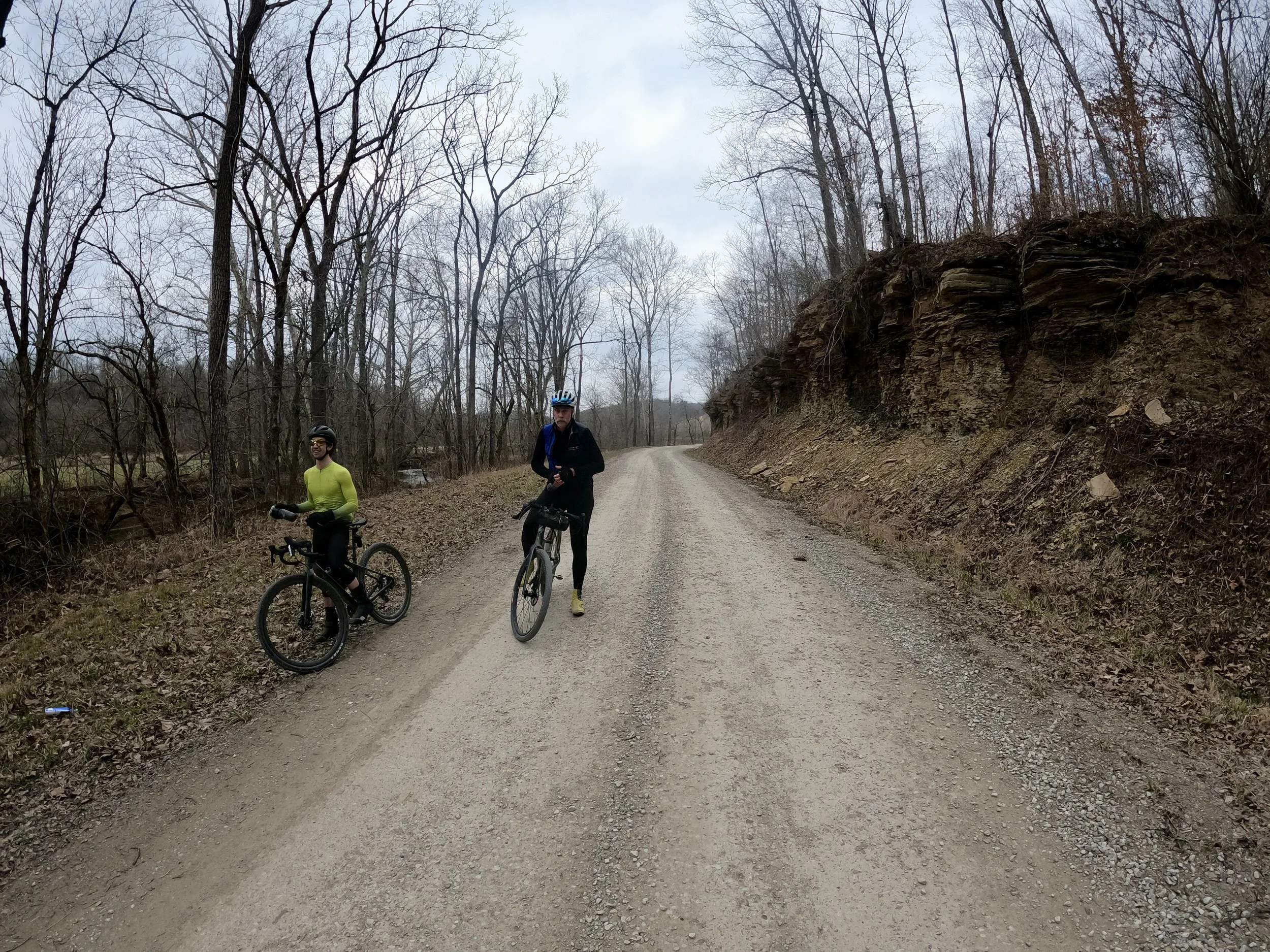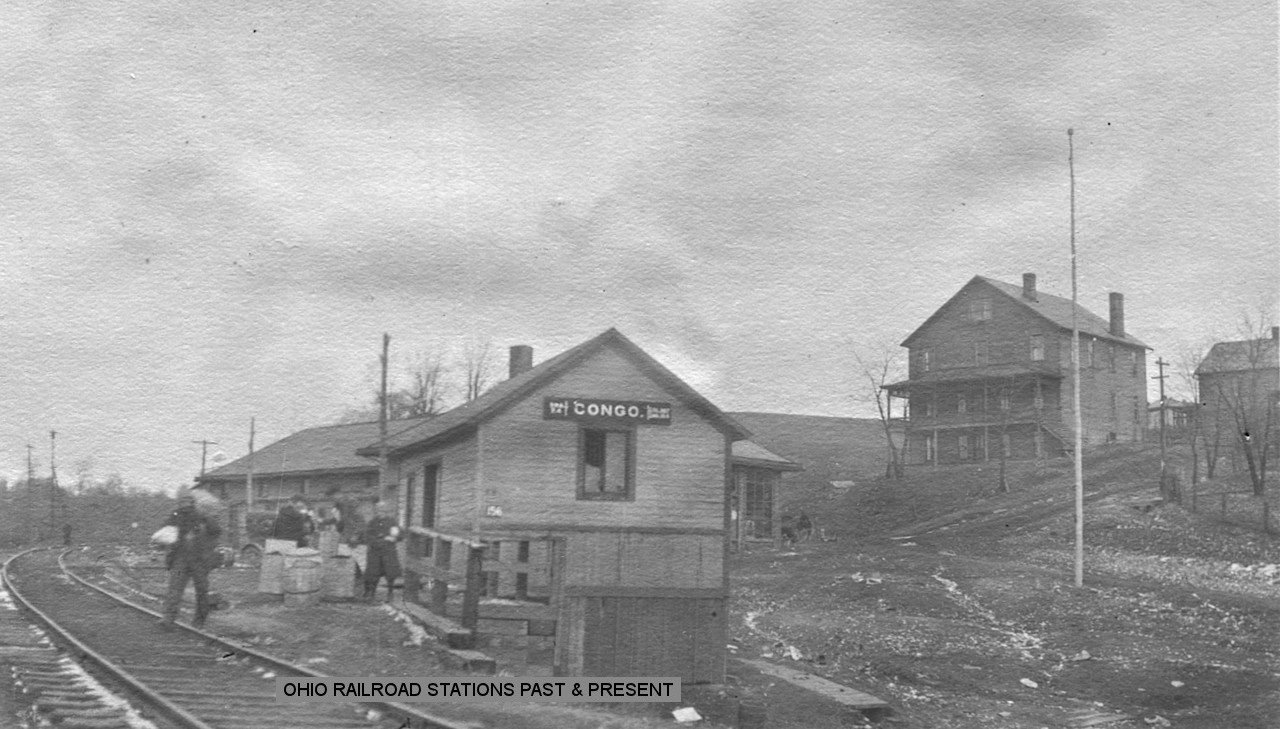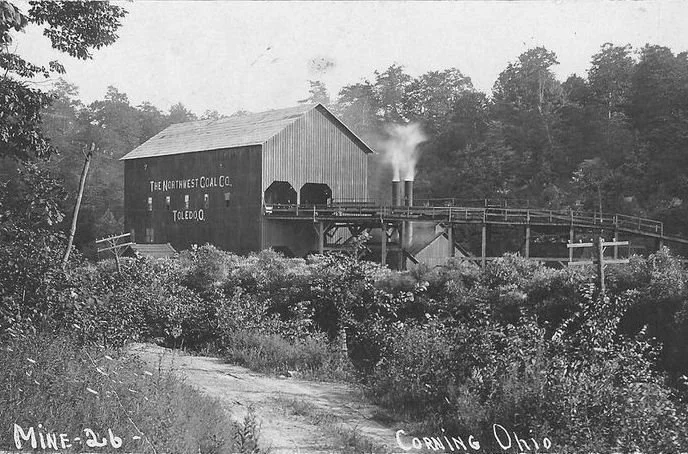Recap: Sunday Creek Massacre
“It’s a pretty area.” says Nick Tepe.
“There is a bit of climbing” states Ray George.
These are the same kind of understatements as one might say “yeah, Michael Jordan was ok at basketball.” Nick’s route planning and Ray’s ride report gave me new impetus to further explore the hollers amongst the Cities of Black Diamonds. I am fond of combining gravel exploration with historical research. It is a fantastic aspect of gravel adventuring to go out into the “wilderness” and explore remote areas that seem barely touched by human hand. And yet, with a bit of historical digging, we find that we are riding through literal cities that had thousands of people a mere century ago which now have virtually vanished off the earth, leaving behind only thick copses of trees standing between the steep hills.
I had designed the San Toy route, named for one of the best Ohio ghost towns from Ohio’s coal mining boom era. We have done the San Toy route nearly a dozen times now. It is one of my favorites. And yet I know there are other ghost towns to explore nearby that we have yet left unexplored.
Nine riders gathered at 8am in New Lexington. More accurately, six of us gathered and three others upped the ante by riding to the event. There is nothing more badass than riding to a big gravel event and making it sound like nothing more than a small warmup. The temps in the parking lot were a frosty 28, but the bright orange orb on the horizon promised to warm us up quickly. I opted for summer kit with light accoutrements like arm and leg warmers. However, the sun teased us and then quickly disappeared behind a thick wall of Lake Erie cloud cover. And icy stiff wind kept the chill biting at us all day. I was either cold or chilly all day, hardly ever comfortable. The sun only reappeared steadily during the last hour.
Instead of our usual San Toy route heading due East towards Moxhala, we dived south and aimed our sights on Congo, one of the yet-to-be-explored coal mining ghost towns. There is quite a bit of interesting history with Congo. It was bought by a land prospector and laid out with homesteads to be purchased by miners. The coal was plentiful in the hillsides, giving birth to no fewer than a dozen mines. The problem was the topography. It was steep and steep and steep which made it difficult to get the coal out to any usable market. The Toledo and Hocking RR finally pierced the hilly hurdles, quite literally. A wye in Drakes fed north through the valley following the flow of Sunday Creek until it smacked against the hillside. Not to be deterred, the engineers tunneled through in two short years, from 1879-1880. The RR tunnel went right under the town of Congo and then emerged on the north side of the ridge, bending back south following the next holler towards the metropolis of Corning.
Congo is framed by two ridges. The northern ridge is called “Hungarian Ridge”. It was populated almost entirely by imported labor from Hungary. The southern ridge was populated by immigrants from central Africa, hence the town name of Congo. Supposedly the Africans all moved en masse after the mines closed down to Rendville before further dispersing. There are still many lived-in structures along Hungarian Ridge while the other ridge is mostly reclaimed by fields and forests. It looks like the train track might have split the two ridges before disappearing in the tunnel. This is all on private land so it isn’t immediately visible from the road.
After a quick tour of Congo, we dropped down the valley, popped up over the next ridge and came through Corning. This was the big railroad hub of the Black Diamonds era and much of the town still remains. It has one of the largest populations of any still inhabited town of this area. The wall coming out of Corning was a beast. At this point we were hitting about 100’ of climbing per mile and had maintained a quick-for-us pace above 13mph. The bigger climbing was about to come.
Next up was to locate three more Black Diamond ghost towns. First up was Chapel Hill. We found only a cemetery marking the town location along with a few remaining homesteads. Not much else remains. On to Alabama Hill. There is absolutely nothing left to note that Alabama Hill once existed. It is all empty. We dropped down into the valley to the famous San Toy to see the ruins hiding among the trees and then coast through the neat covered bridge.
We quickly came upon the Sunday Creek recreation area. Again, we dive down off the ridge into a super neat, holler so tight it might be called a canyon. The road is decidedly “adventurish”. The valley is bewitching. It really does feel like you’ve landed on a different planet. You are quite sure that you are really really really far away from any sign of civilization.
Today I brought my new Bearclaw Beaux Jaxon adventure bike. With 29x2.6” tires and the rugged Ti appearance, there is no mistaking this bike for a svelte carbon race weapon. Perhaps I am trying to compensate for something? The price I pay for pushing big rubber all day is the reward I earn on rugged downhills. This thing absolutely rails gravel corners. The tires seem to have fingers that reach into the road surface and grab on with a fury. I can descend at 30+ mph without fear of rounding the corner and finding a ditch or rock in the road. Or a tree. Or a modest size pickup truck … all will be quickly dismissed under my giant tires. Anyway, this rugged valley is the one place I can play at the expense of others in the group. They will get their revenge as we climb back out.
We departed the regular San Toy route that traverses these same roads and then went into the new “Nick Tepe” area. There is a whole lot of climbing in this section. Almost every climb is something like 18%, or 21% or even 25%. I can see that walking is a viable option. And the hills just keep coming and coming. Even the descents go uphill. Whereas “normal” Ohio gravel can feature up to 100 feet of climbing per mile, I’ll bet this area was closer to 130’ per mile. Our pace dropped. Our legs hurt. And we were about two hours out from lunch on empty stomachs.
As much as the climbs hurt the legs, the scenery was magnificent. Bucolic valleys. Narrow farms nestled in the hillsides. Beautiful sights from the top of each hill. Trickling brooks bubbling out of each holler. Only the stiff headwind and icy temperatures kept the suffering level dialed up.
We raided the Subway in Glouster for an infusion of calories and liquids before following much of the regular San Toy route back North. Salem Hollow. Iron Point Road. Some iconic names that have become legend among the Ohio gravelers. Shawnee is an unreal site that is hard to describe unless experienced personally.
We scampered back to the parking lot in New Lex. I collapsed into the car with 72 miles under my belt at 13mph with 7500’ climbing. It was a big hard day. The tough guys in our group had another 14 miles back to their start in Somerset. I was glad to be done.
I leave with some images of people who lived in these valleys a hundred years before I decided it would be fun to ride my bike here. People made their livings here. People were born. People fell in love. People worked. They worked very hard. It was certainly a hard life. The toughness is etched in their faces. We like to think we are tough after a big day on the bike, but I’d be willing to bet I wouldn’t last a day or two of hard labor in one of these mines.

